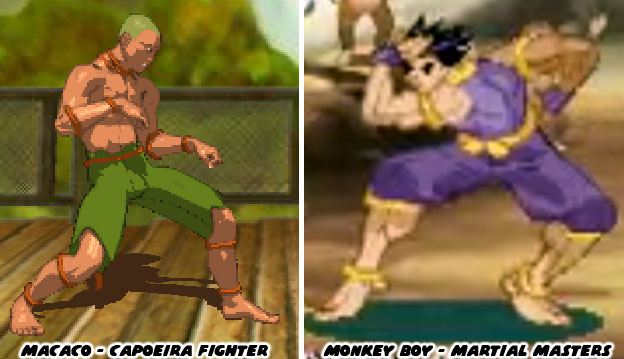
The known martial arts have existed since the earliest empires and just like those kingdoms they have experienced revolutions of their own. Art, science, religion and philosophy changed and evolved at the whim of the cultures and kings. The fighting arts survived the changes and have become immortalized in popular culture. One of the most storied celebrations of the amazing men and women of the martial arts coming from Luo Guanzhong's Romance of the Three Kingdoms. The events of the actual second century Han Dynasty in China were retold to audiences in the 14th century. Creative freedom and a great deal of historical fact made legends out military leaders and strategists. Warriors, heroes, criminals and soldiers have all been celebrated in other classic adventure stories. These fighters had never seemed more real than when they were presented in cinema. The end of the 20th century would signal the rise of a new form of entertainment. The average person would get to play as the legendary fighters in videogame form, marrying Eastern fables with Western technologies. Real and fictional battles could be experienced in any genre, from the role-playing series named after the Three Kingdoms to the action brawler Dynasty Warriors and Oriental Heroes.
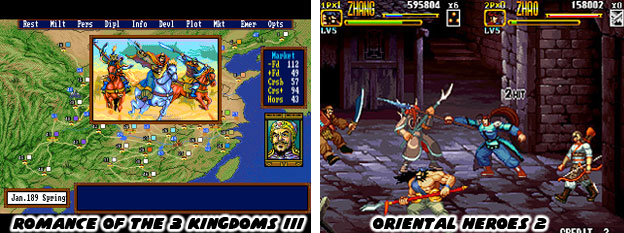
This immersion in martial arts folklore gave audiences an entirely new experience. The martial arts would continue to change the face of popular culture. The sciences and philosophies of ancient Asia had to be explored in order to understand and appreciate the origins of the fantastic fighters. The roots of the Eastern Martial arts and philosophies were based in China. Even karate practitioners had to acknowledge that the origins of their systems were based in kung-fu. Mas Oyama, the main inspiration behind Ryu of Street Fighter fame, had defeated hundreds of men in his illustrious career but had known defeat only once. Early on in his karate career he decided to test out his style against a master of Taiji Quan. Taiji is a variation of the same Tai Chi you might see being practiced in a park. The Taiji master, reportedly named "Mr. Chen" was elderly and invited Oyama to a sparring match. Oyama thought that he would make quick work of him. Instead he discovered that no matter how hard he tried he could not land a single blow on the master. The elderly Chen used simple circular motions and smooth footsteps to evade the attacks. With tears in his eyes Oyama thanked the man for showing him that he still had room to grow as a martial artist. The life story of Mr Chen was lost to the pages of history, but the encounter was not. It helped perpetuate the myth of the ancient martial arts masters, characters like Gen in the Street Fighter series for example was one such person.
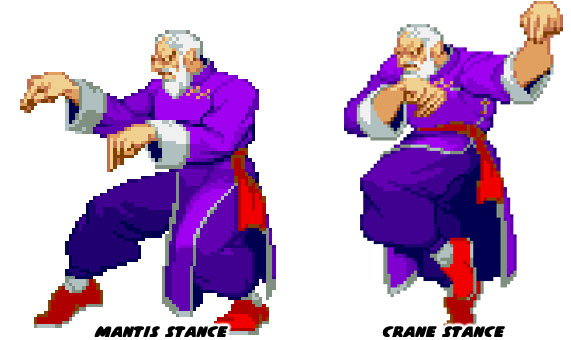
Gen was actually the first and only Street Fighter character to have two sets of fighting stances. Arcade players could switch between them in the middle of a match. Each stance also came with its own special and super moves. The character actually had a few strikes based on Tiger and Eagle Claw but his primary stances were Crane and Mantis. The early forms of Kung-Fu were inspired by the predatory animals in nature. These were considered noble fighting forms. Of course villains developed "evil" versions of Kung-Fu based on the poisonous animals like the scorpion and centipede as well.
The character of Gen was inspired mainly by Huo YuanJia. Although they do not share many physical traits, it is the legend of the Kung-Fu master that bears the similarities. Huo was born in 1868. He was a sickly child who was kept away from the martial arts by his overprotective father. He proved that he was an amazingly gifted fighter when he defeated the older person that had beaten his brother in a match. From that point on he was allowed to study the martial arts. He had beaten the masters of various styles at a young age. He killed a man in one fight and put himself in exile.
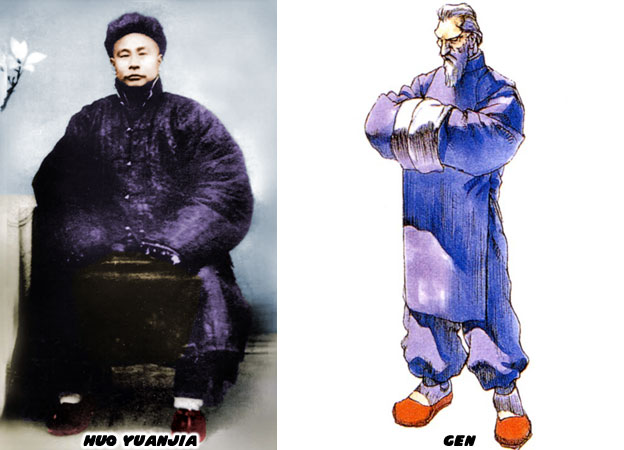
It was similar to what Mas Oyama did when he was younger. Oyama was already an experienced karateka (karate practitioner) and had gotten in a bar fight. He killed the man that pulled a knife on him. Oyama knew that he had the ability to disarm the attacker but instead lashed out. This shame of not being able to control himself in a fight caused him to live like a hermit and become a stronger fighter mentally and physically. Both Huo and Oyama returned from their exile at the peak of their abilities. Of course the legend of Huo goes back almost a century earlier. Huo came out of "retirement" to face the foreign invaders. The Japanese and British had begun colonizing China. The nations would put on matches that surmounted to imperialist propaganda. Having boxers, judo experts and wrestlers take on all so-called kung-fu masters and beat them up in public matches. It was disheartening to the Chinese that their fighters and their arts seemed ineffective against the occupiers. They sorely needed an icon to rally around and Huo came along at the right time. He soundly beat the best fighters from abroad to demonstrate that the Chinese were not inferior people, nor were their fighting styles.
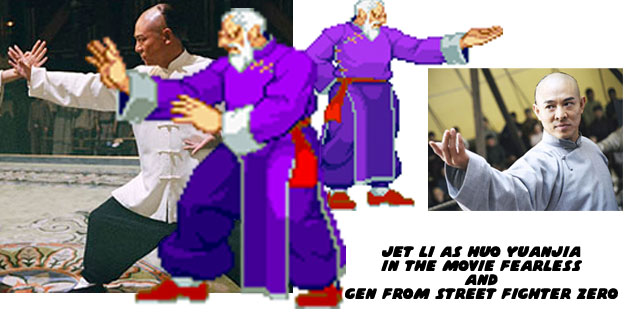
Huo became a national hero when he proved himself against the best Western and Japanese fighters. A fantastic retelling of his life story was done by Jet Li in the film Fearless. The question you may have is why is Gen depicted as an old man whereas Huo was young when he became an icon. Huo died at the age of 42. He suffered from health issues most of his life, including asthma and jaundice. Near the end he had contracted tuberculosis. His health deteriorated quickly and he died just a decade into the new century. The rate at which his health declined was questionable to many. Huo was fast becoming a symbol for national unity, which concerned the occupiers greatly. The Chinese suspected that the Japanese doctors that were treating him for his condition had poisoned him instead.
Gen was a symbolic character. He represented the legendary Kung-Fu masters from 18th and 19th century China. He was what would have happened if Huo had lived long enough to fight the greatest martial artists of the 20th century. Huo would have been elderly but still a dangerous man in the eyes of many. In Street Fighter canon Gen was not only considered a legitimate threat to Ryu but even the main villain Gouki. People suffering from tuberculosis sometimes cough up blood due to the deterioration that the disease has on their lungs. Gen could be seen suffering from this affliction in several endings in the Street Fighter Zero/Alpha series. He was such a proud man that he wanted to die fighting the best opponents in the series rather than to succumb to the disease.
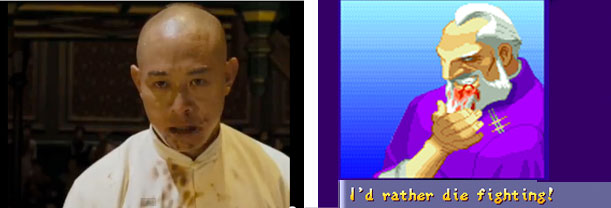
Eventually Gen died, whether by the hand of Gouki or not was never officially stated by Capcom. His secrets did not die with him. As an elderly man he helped mentor Yun and Yang. Each of the Chinese twins learned just enough of his fighting style to make them popular opponents in Street Fighter III. His greatest student however became an international darling. Gen was good friends with the father of Chun-Li. When her father was killed in the line of duty it was Gen that stepped in and continued training her. She became the best female martial arts master in the world but also became a great police officer and avenged the death of her father. Gen would turn up in manga and anime films to cement his status as one of the best fighters in the universe. We should be thankful that Capcom was able to incorporate a mythological Chinese hero in their martial arts fable.
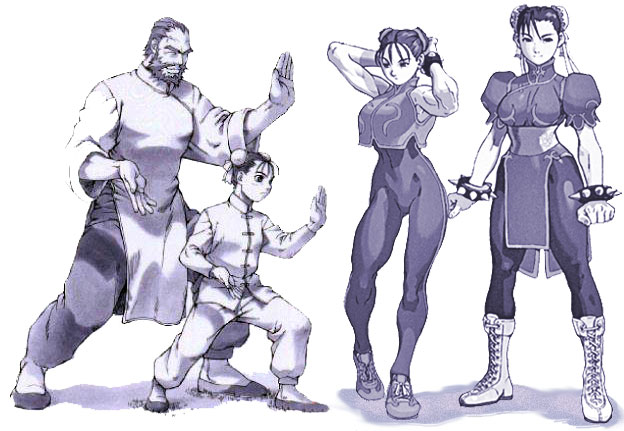
Chun-Li was rooted in a myth that was even more important to the identity of the Chinese martial arts than Gen. The next blog will look at her origin. As always if you enjoyed this blog and would like to sponsor me please visit my Patreon page and consider donating each month, even as little as $1 would help make better blogs and even podcasts!

No comments:
Post a Comment